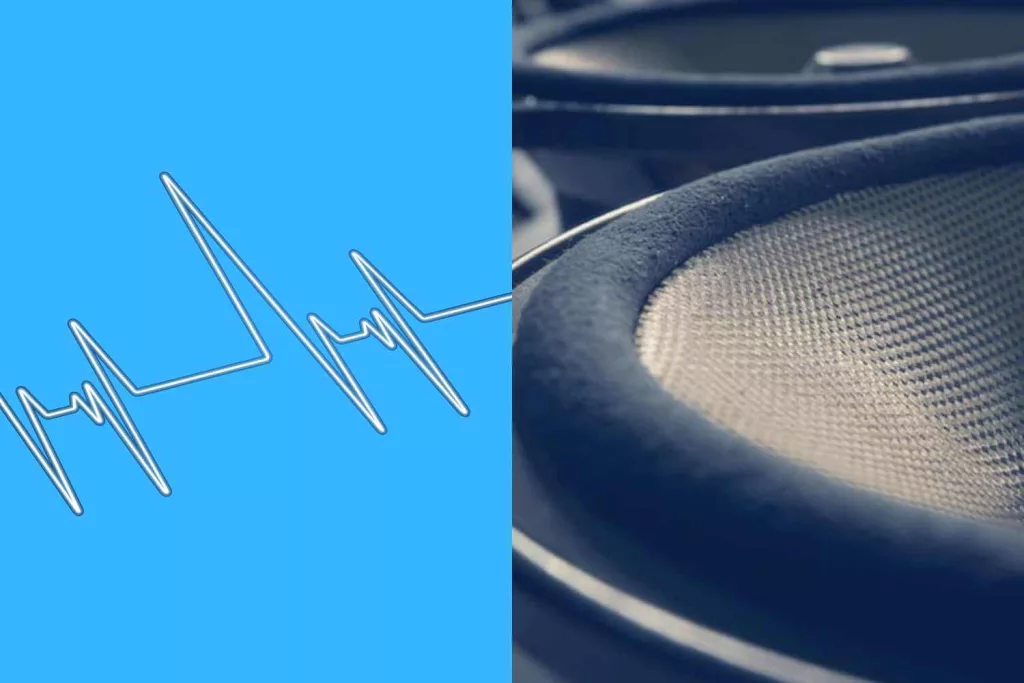There’s hardly anything more jarring to DJs, music enthusiasts, or casual listeners than the harshness of speaker interference.
Often, this is mistakenly attributed to the low quality of second-hand audio equipment or speakers.
However, dismayingly, even the shiniest, newest speakers can betray you with static noise, electrical buzz, and audio signal disruptions.
Diagnosing the particular cause within an electrical device can be an equally frustrating puzzle, leaving you wondering about the “why” and the “how” of your current sound woes.
In the following sections, we’ll dive into the various sorts of speaker interference and explore several troubleshooting techniques to help you reclaim that crystal-clear audio bliss.
Tackling Speaker Interference: Helpful Strategies
Electrical sound interference comes in several unwelcome forms—from the static noise we’ve all groaned over to sporadic crackling and hissing. Even a persistent grainy backdrop to your tunes can occur. Time to scour through a checklist, inspect your audio gear, and troubleshoot the disruption. If fortune favors you, you might find success and harmony on your own.
Don’t miss out on: Top Picks for XLR Cables (Quality Matters in Audio Cabling!)
Exploring Varieties of Speaker Sound Interference
Before we rush into resolution tactics, understanding the spectrum of noise interference is key, as each has its root cause.
Interference sounds may seem interchangeable, yet crackling differs greatly from hissing in origin.
We’ll start by identifying common interference sounds before sharing handy remedies you can implement without skipping a beat.
Resolving the Annoyance of Buzzing Electrical Interference
With its high-pitched 120Hz tone, buzzing is often the byproduct of grounding loops.
Buzzing may also stem from volume issues or overloaded speakers, and if your equipment suffers from physical damage like cone or spider tears, buzzing is likely.
The Lowdown on Crackling/Popping Sounds
This type of interference commonly signals damaged connections or worn wires. Occasionally, a subtle grainy crackle can suggest a worn speaker voice coil, especially in second-hand purchases.
Since crackling and popping often share a cause—and a solution—addressing one typically remedies both.
Combatting Hissing/Humming Speaker Noise
This pervasive white noise, often a low, brooding 60Hz hum, can arise from your amplifier or external factors.
Keep an eye out for compromised speaker cables or interference from nearby electronic devices. At times, quality speakers may emit a faint hiss when silent; this is normal and subsides when you play audio.
Boost your knowledge: The Ultimate Guide to DJ Cables
Navigating the Diagnostic Checklist for Speaker Interference
Having highlighted frequent interference culprits, let’s review factors that may contribute to the issue.
Most of these can be swiftly addressed, though a few might necessitate assistance from a pro or the original manufacturer.
Unraveling the Debate: Balanced Vs. Unbalanced Connections
Common culprits in sound interference are the types of connections you’re using. Unbalanced cable connections particularly increase susceptibility to noise, especially when power cables cross paths with them.
If issues persist, consider the switch to balanced cables with their own grounding element, vastly reducing typical unbalanced connection pitfalls.
Understanding and Remedying AC Line Hum
Upon detecting a hum, scrutinize the vicinity for devices with motors, a common source of AC line hum.
Options are either ceasing their use when enjoying audio, or investing in a UPS (Uninterruptible Power Supply) to both quell hums and guard against power anomalies. Alternatively, the cost-effective isolation transformer offers relief without the impracticality of continuous shutdowns.
Discover: The Supreme AV Receiver (Revealing Top-Tier AVR Speaker Units)
Untangling the Mess: What to Do About Crossed Wires
Examine whether your woes stem from crossed wires. Keep most wires clear of each other to prevent interference, especially power cables intersecting with unbalanced speaker wires. Balance your wiring environment, or turn to balanced cables for a fix-it-all approach.
Cable Integrity Check: Assessing Your Audio Cable Quality
Examine the state of your cables to avoid connection insecurities or shielding breaches which can promote interference.
Addressing Computer-Based Interference Head-On
Don’t discount digital sources of distortion; a low-grade sound card is frequently to blame.
Consider a higher-tier audio interface or solutions like a noise-suppressing USB sleeve to counteract stray currents.
Tackling the Persistent Ground Loop Hum
This 50 to 60Hz problem is rooted in the powering of different components from diverse outlets, attracting noise like a magnet. Utilizing a single power strip for uniform AC power solves this, as does a ground loop isolator for longer distances.
Learn here: Identifying and Fixing a Subwoofer That’s Blown (Can It Be Salvaged?)
Eliminating Static From RF Interference
Dirge-like static from speaker RF Interference, exacerbated by modern devices’ radio signals, can be detected by bringing a Wi-Fi or Bluetooth device nearer to the speaker. Resolving this usually involves increasing separation or temporarily disabling wireless functionalities.
Optimizing your bass: Subwoofer Placement Tactics for Supreme Sound
Judging the Issue: Is It Speaker Quality?
Investigate whether your speaker itself is emitting interference noises due to damage or defects.
Seek warranty solutions or consider DIY repairs for minor damage. If in doubt, consult experts or explore replacement options.
The Volume Dilemma: Avoiding Redlining
Keep in mind that pushing volume to extremes can introduce distortion.
Allow proper headroom or invest in speakers capable of higher volumes without compromising quality, or add quality subwoofers to complement your setup.
Demystifying audio issues: Understanding Clipping (Preventing Redlining and Audio Peaking)
In Conclusion: Conquering Speaker Interference
Nobody is immune to the irritation of audio interference. However, the joy of crisp, uninterrupted sound makes troubleshooting efforts well worth it.
If these measures don’t clear the airwaves, seeking professional advice may be your next step.
Regardless of your path, I’m rooting for your victory over pesky interference, for a truly immersive audio adventure.
